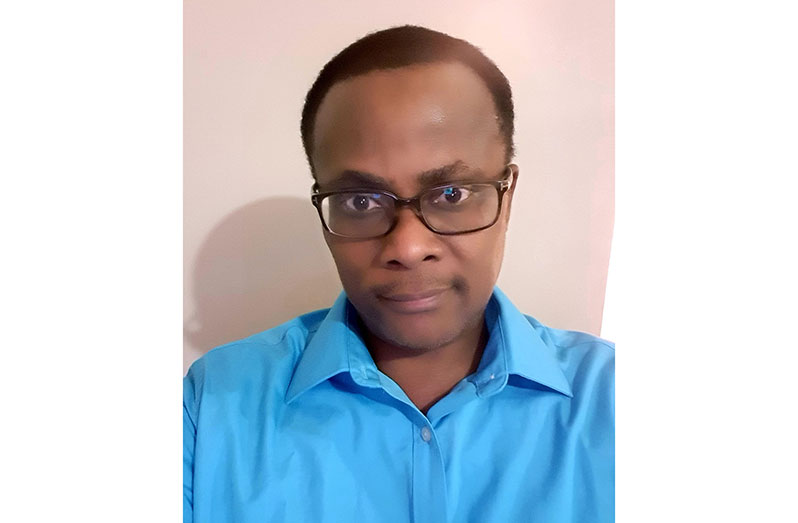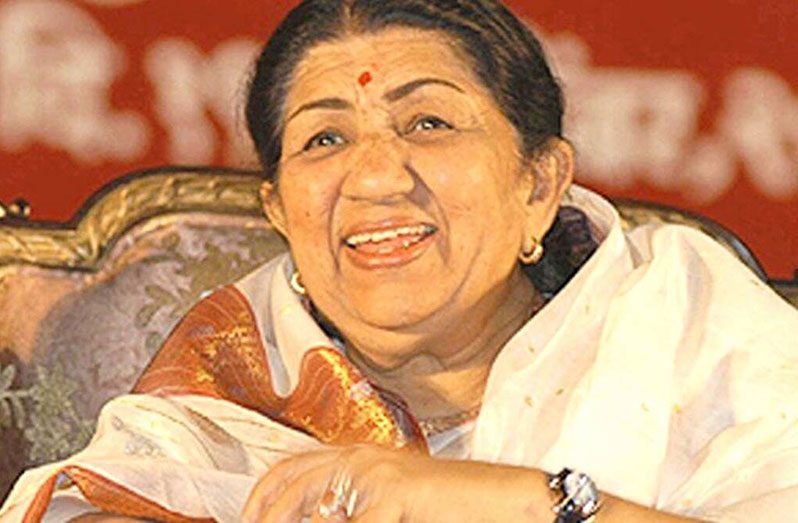By Orin Gordon
FOR a time, there was a mistaken belief that the great Lata Mangeshkar was the most recorded singer in history. Neither the question nor the methodology for establishing it has been definitively settled. However, in the musical world, in India and in the diaspora that includes Guyana and Trinidad, there’s no doubt about her legacy.
Lata died a week ago in the Mumbai hospital to which she’d been admitted, sick with COVID-19. She was 92.
To many in Guyana during my childhood, Lata was a staple of their radio diet. At the height of her popularity and productivity, fewer people owned TVs than is now the case. In parts of the country, all folks had was the radio. And Lata and her beautiful voice were a major part of that.
So were her sisters Usha Mangeshkar and Asha Bhosle, Kishore Kumar, and Mohammed Rafi. You can’t separate the prolific playback singer from her contemporaries. I can’t separate Lata from Kishore, with whom she had many famous duets.
You know the scene in old Bollywood movies in which boy and girl flirt heavily in song, he moves in for a kiss, they come close and she twirls away at the last moment? Lata’s voice covered that of the shy tease, and the singing voice of the young man engaged in patient seduction was often Kishore’s. Her collaborations with Mohamed Rafi were mostly from earlier years.
Lata’s influence spanned the classical and the popular. It preceded the iconic Amitabh Bachan, and continued right through to other generations. The Indian film industry changed, and Lata adapted. In came Mithun Chakraborthy and his character Gunmaster G9, a knockoff of James Bond. Lata sang Dil Tha Akela Akela in Surakksha, and Kishore, Usha and Manna Dey also appeared on the soundtrack.
I didn’t consciously seek out the music of Lata and her contemporaries. My mother – a country girl from Goed Bananen Land in Canje, Berbice – forbade us from changing the station when a Hindi language song came on.

A multiculturalist at heart, she took us to the cinema to see Bollywood classics such as Haathi Mere Saathi and Sholay. Bruce Lee would’ve been my choice. She lit diyas at Diwali at our Georgetown home, even though she was Christian; not ostentatiously so, and not as many as our Indo Guyanese friends. A few, in cultural acknowledgement. This is who she is.
In our family dynamics, dad was the softie who you could push for ill-advised concessions; mom was the law and the sentencing magistrate. You did not mess with her. You couldn’t sit for a meal unless properly dressed, and you spoke “proper English”, as she described it. Top of her list of beyond-the-pale offences was the other c-word, the racially-charged one for people of Indian descent.
She never had to worry about any of us when it came to this, but she stopped talking to people who assumed that hers was a safe pair of ears. She couldn’t wield her influence or protect our sensibilities on the playground or in school, where cultural sensitivity can often be in short supply.
To our safe ears, some ‘bredrin’ would make laughing references to a certain anatomical deficiency in otherwise attractive young women. It’s abundantly clear today that such broad generalisations have no backing.
As a young radio announcer in Guyana, I’d rub shoulders in the record library with Ayube Hamid – one of the most gorgeous voices ever to speak into a mic – as he picked out his Lata and Kishore selections.
AH did a range of shows featuring popular and classical songs from India, as well as western ones. The intro tune of his Indian Memory Album show was Rafi’s Suhani Raat, a haunting melody that makes me want to take the shirt off my back and give it away.
When I had to get up early for a show or news shift, I’d wake up to Richard B. Mahase, and Indian music. That was a piece of conventional wisdom in radio programming… the heavily Indo-Guyanese rural communities got up early, and they needed to be served.
Decades later, we’re still in our laagers. Was the opportunity of Lata Mangeshkar’s passing taken for all music stations in Guyana and T&T to clear blocs of their schedules and pay musical tribute to a culturally consequential artiste?
The thinking of programme managers doesn’t seem to have evolved much. Generally, and with the exception of fusion tracks, radio playlists in T&T where I live do not cross-thread Indian music with mainstream hit songs.
This separation has grown more pronounced as the number of stations has increased. Now a listener to a station that plays Indian songs doesn’t have to hear any other type of music. The admirably experimentative Machel Montano, Drupatee and others have provided openings, but many of the doors remain closed.
This is a general reminder of how far we haven’t come. In our lifetime will we see leaders of parties in Guyana and T&T that are different from their base? Or will we continue to ring-fence things? I hope that Lata’s legacy is reflected in my mother’s strictures… don’t tune out; tune in.
Lata Mangeshkar joins country and western pioneer Charley Pride, Manu Dibango of Soul Makossa fame, and jazz figurehead Ellis Marsalis as great musicians claimed by COVID-19 in the past couple of years. They could have one heck of an Indo-Afro collab up there.
__
A version of this column appeared in the Daily Express in T&T, where Orin is based. Follow him at oringordon.com



.jpg)








